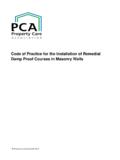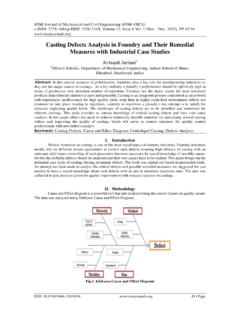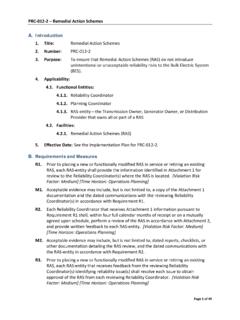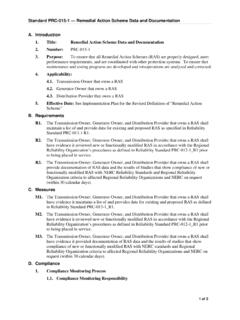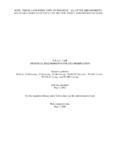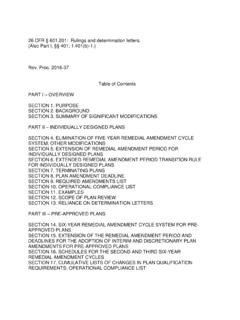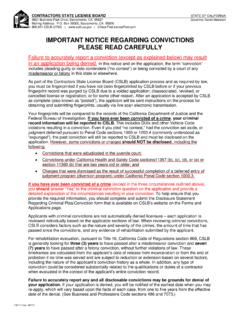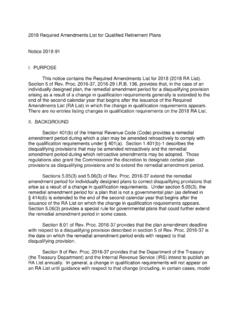Transcription of DAMP AND MOULD Health risks, prevention and remedial …
1 DAMP AND MOULD Health risks, prevention and remedial actions Information brochure Abstract This information brochure has been developed in collaboration with WHO and the Health and Environment Alliance, and was co-funded by the European Commission (DG Sanco, grant agreement 2005156). The brochure summarizes key messages that the public needs to know in order to prevent and reduce the exposure to dampness and MOULD , and to remove potential MOULD once it occurs. Emphasis is put on the problem of excessive moisture, which is the root cause for problems with dampness and MOULD in indoor built environments.
2 Further references and user guides on actions against dampness and MOULD in several languages are provided, and reference is made to an international list of agencies providing more detailed damp and MOULD support functions to the public. This information brochure has also been produced in response to the WHO Indoor Air Quality Guidelines on Dampness and MOULD . This brochure was developed following the advice of the EU Indoor Air Quality expert group, and makes available to the public some main conclusions derived in the WHO project on policy implications of actions against indoor air pollution with biological agents.
3 Address requests about publications of the WHO Regional Office for Europe to: Publications WHO Regional Office for Europe Scherfigsvej 8 DK-2100 Copenhagen , Denmark Alternatively, complete an online request form for documentation, Health information, or for permission to quote or translate, on the Regional Office web site ( ). World Health Organization 2009 All rights reserved. The Regional Office for Europe of the World Health Organization welcomes requests for permission to reproduce or translate its publications, in part or in full.
4 The designations employed and the presentation of the material in this publication do not imply the expression of any opinion whatsoever on the part of the World Health Organization concerning the legal status of any country, territory, city or area or of its authorities, or concerning the delimitation of its frontiers or boundaries. Dotted lines on maps represent approximate border lines for which there may not yet be full agreement. The mention of specific companies or of certain manufacturers products does not imply that they are endorsed or recommended by the World Health Organization in preference to others of a similar nature that are not mentioned.
5 Errors and omissions excepted, the names of proprietary products are distinguished by initial capital letters. All reasonable precautions have been taken by the World Health Organization to verify the information contained in this publication. However, the published material is being distributed without warranty of any kind, either express or implied. The responsibility for the interpretation and use of the material lies with the reader. In no event shall the World Health Organization be liable for damages arising from its use.
6 The views expressed by authors, editors, or expert groups do not necessarily represent the decisions or the stated policy of the World Health Organization. Acknowledgments This brochure was co-written by the Health and Environment Alliance (HEAL). HEAL aims to raise awareness of how environmental protection improves Health . Based in Brussels, it brings together 60 organisations working at the international, European and national level. Further information can be found at Scientific advice by project advisory group members (Dr Kelly, UK; Dr Kurnitski, Finland; Dr Szewzyk, Germany) during the production phase of this brochure is gratefully acknowledged.
7 Photo credits: Braubach (page 3; 4; 6 middle and lower picture); Kurnitski (page 6 upper picture); Moriske (page 5) 3 Damp and MOULD : why you should care! In Europe, an estimated 10 50% (depending on the country) of the indoor environments where human beings live, work and play are damp. Too much moisture makes a home stuffy and gives it a faint odour. Humid walls create a coldness that makes more heating necessary and increases energy bills. _____ WHO is concerned about this situation because excessive dampness and MOULD are a threat to Health .
8 Occupants of damp or mouldy buildings are at increased risk of experiencing Health problems such as respiratory symptoms, respiratory infections, allergic rhinitis and asthma. Some people are more sensitive to MOULD than others, and some groups are especially vulnerable. Additional effort should be made to keep away from damp and MOULD babies and children, elderly people, those with existing skin problems, such as eczema, or respiratory problems, such as allergies and asthma, and anyone who is immuno-compromised ( , chemotherapy patients).
9 On the other hand, WHO has demonstrated that remedial action works. For example, research shows that people living in well-insulated and adequately ventilated accommodation are less likely to visit their doctor or be admitted to hospital due to respiratory conditions than those living in damp homes. This brochure provides practical tips for the public on how to tackle the core problem of excessive moisture (which can take the form of damp air, condensation on surfaces and increased humidity levels in materials) and how to prevent MOULD growth, as well as on how to clean up MOULD safely.
10 Practical tips on getting rid of damp and MOULD Key message: Measures to prevent or reduce moisture are the main way to limit the development of MOULD (and any microbial) growth: Without water no MOULD ! _____ The three main actions are: 1. Detecting and locating the source of the moisture problem; 2. Removing the MOULD ; and 3. Taking action to control excessive moisture and condensation. This brochure begins with an introduction to measures to detect and locate a MOULD problem, and then provides advice on the adequate measures to take if you are to tackle the MOULD damage yourself (do-it-yourself work).










